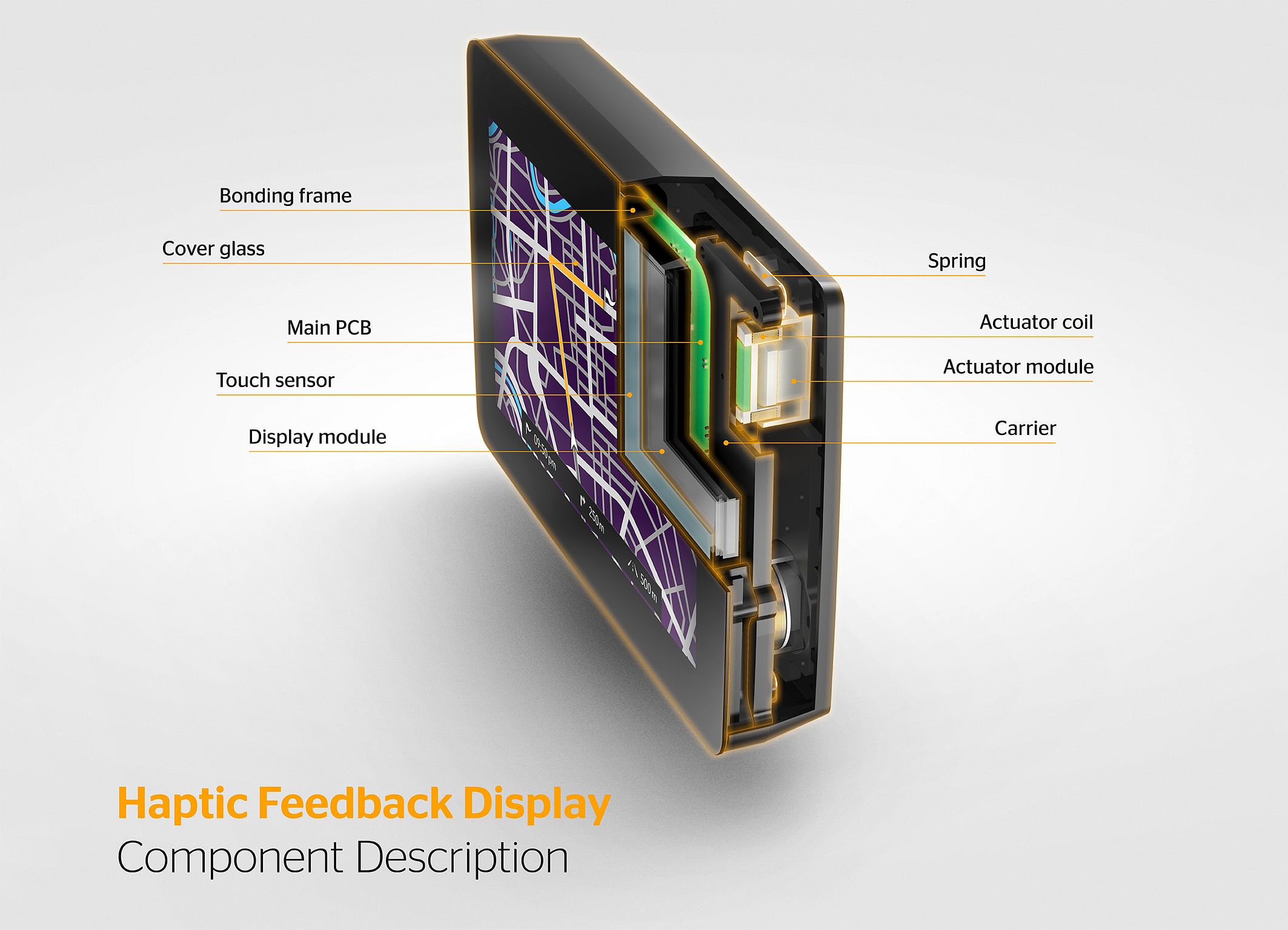Continental reveals active haptic feedback display for use in cars
Operating touch screens requires some complex hand-eye coordination, which may temporarily distract the driver.
Operating touch screens requires some complex hand-eye coordination, which may temporarily distract the driver. To find the desired operating element, select it, and ensure that the intended function has really been triggered, drivers must sometimes divert their attention away from the road for several seconds, and are thus ‘flying blind’ during this time.
With its new active Haptic Feedback Display, automotive supplier Continental says it now offers an intelligent and state-of-the-art solution to this dilemma. The novelty is that this display provides feedback by means of a movement impulse that can be felt through one's fingers, indicating that the desired operation has been triggered and understood by the system. To be used in vehicles, these displays need to fulfill several additional requirements. For example, a finely tuned force recognition (or ‘force sensing’) ensures that accidental touches can be distinguished from intentional operational commands.
"The active haptic feedback enables us to close the loop between driver, vehicle, and environment," explains Eelco Spoelder, head of the Continental business unit Instrumentation and Driver HMI. "The clear advantage is that the driver does not have to change focus or take their eyes off the road, but instead get direct tactile feedback on the touch screen.”
Continental now presents its first complete touch display with haptic feedback as a demonstrator with technology ready for production. It is a touch‑sensitive car-appropriate 8-inch screen (20.3 cm) with an inbuilt haptic actuator system.
The actuators basically consist of an electromagnetic spool with two windings. In certain operating situations, they trigger mechanical feedback that can be clearly felt by the user, whilst at the same time helping to measure the force exerted. They are fitted behind the construction elements of the touch display, and are thus located under the screen's bonded layers (protective glass, capacitive sensor, display). The conditions for use in vehicles and the basic principle of active haptic feedback require an especially rigid structure of the individual construction elements. The solution presented here can be scaled to larger display sizes depending on vehicle manufacturers´ requirements. An application of the haptic feedback for display sizes of 12.3 inches seems technically possible at present.
The tactile feedback from the display is not visible to the naked eye as a mechanical movement. In fact, the ‘deflection’ is only around a tenth of a millimetre. But as this takes place with very high acceleration, the mechanical impulse generated can be clearly felt by a finger. The feedback always takes place on the entire display area. The characteristics and intensity of the haptic feedback can be freely configured, so that it could be adapted to the brand-specific haptic standards of OEMs. They could also be adapted to a particular driving situation as well as operating situation.

Above: A cutaway of the Haptic Feedback Display illustrates the components which bring the haptic feedback to life.
Innovative operating concept with search haptics
The operating concept developed by the company for its Haptic Feedback Display was specifically designed to allow for tactile feedback. It includes haptic search, an aspect that is important for the reduction of driver distraction. When the driver runs a finger over the display, the haptic feedback provides information about the limitations of operating elements. Among other things this kind of ‘felt support’ allows the user to distinguish between several virtual buttons without having to look at the display.
The Haptic Feedback Display therefore combines the aims of greater operating safety while driving with much greater user-friendliness by allowing largely ‘blind’ operation. Users receive active haptic feedback in precisely those operating situations in which they expect it.
The Haptic Feedback Display is due to be ready for series production by 2017.
Operating elements with haptic feedback, developed and produced by Continental, are already in widespread use. For example, the Mercedes-Benz C-Class has an optional touch pad with this technology which controls the infotainment system.
RELATED ARTICLES
US tariffs will hurt both automakers and US manufacturing: ACEA
European Automobile Manufacturers’ Association says that the EU and the US must engage in dialogue to find an immediate ...
Trump levies 25% tariff on all cars imported to US
President Donald Trump claims new levy on all cars and car parts shipped into the country will create "tremendous growth...
Hyundai opens its third factory in the US: Metaplant America
Hyundai Motor Group Metaplant America's vehicle assembly and battery plant is the key pillar of the Hyundai Motor Group’...






 By Autocar Professional Bureau
By Autocar Professional Bureau
 29 May 2015
29 May 2015
 5196 Views
5196 Views









